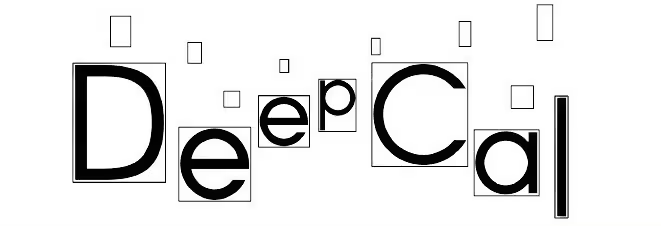In the automotive industry, precise camera calibration plays a critical role in ensuring the safety...
Traditional Calibration Methods Explained
In the realm of Advanced Driver Assistance Systems (ADAS), camera calibration is crucial for vehicle safety and efficiency. Traditional methods like checkerboards, QR-codes, multi-sensor static/end-of-line approaches, calibration to a primary sensor, and basic software solutions have been the industry standard but come with challenges and limitations. This blog post explores these conventional methods and their shortcomings as part of our series on camera calibration in autonomous vehicles. See our previous post on the basics of calibration.
The Importance of Camera Calibration
Before diving into the methods, it’s essential to understand why camera calibration is so crucial. ADAS relies on accurately calibrated cameras to interpret the vehicle’s surroundings. Features like automatic braking, lane-keeping assistance, and collision avoidance systems depend on precise camera inputs. Misaligned cameras can lead to incorrect data interpretation, potentially resulting in system failures and accidents. We have all seen the news of accidents happening due to the ADAS. Safety is an important topic, and we will be discussing it in future blog posts.
Traditional Calibration Methods

1. Checkerboards
Checkerboard patterns are widely used in camera calibration. The process involves capturing multiple images of a checkerboard from different angles and positions. Software then analyzes these images to determine the camera’s intrinsic parameters (focal length, optical center, etc.) and extrinsic parameters (position and orientation relative to the vehicle).
🚫 Limitations :
- - Static Nature: Checkerboards require a controlled environment and fixed setup, making them less adaptable to real-world conditions.
- - Manual Intervention: The process is labor-intensive, requiring trained calibration technicians to position the checkerboard accurately and capture images from multiple angles.
- - Accessibility: Calibration targets like checkerboards are often only available in specialized facilities, not in everyday driving scenarios.
2. QR-Codes
QR-codes are another method used for camera calibration. By placing QR-codes at known positions, cameras can capture these codes to calibrate their settings.
🚫 Limitations :
- - Limited Range: QR-codes need to be within a specific distance range for accurate detection, limiting their flexibility.
- - Environmental Constraints: Like checkerboards, QR-codes require a controlled environment, making field calibration challenging.
- - Static Setup: The static nature of QR-code setups means they don’t adapt well to dynamic conditions encountered during regular vehicle operation.
3. Bullseyes or Other Targets
Bullseyes and similar calibration targets are used in some calibration processes. These targets provide reference points that the camera uses to adjust its parameters.
🚫 Limitations :
-
- - Complex Setup: up these targets correctly can be complex and time-consuming.
- - Fixed Environment: Similar to other traditional methods, these targets require a controlled environment, making them less effective in real-world conditions.
- - Manual Process: The need for manual setup and adjustments makes the process tedious and prone to human error.
4. Multi-Sensor Static/End-of-Line Approach
The multi-sensor static or end-of-line approach involves calibrating multiple sensors simultaneously at the end of the factory production line. This method aims to ensure that all sensors are aligned and calibrated before the vehicle leaves the factory.
🚫 Limitations :
-
- - Time-Consuming: This method can be time-intensive, requiring significant setup and alignment time.
- - Expensive: This method requires a specialized factory line and expensive equipment.
- - Fixed Setup: Calibration is performed in a controlled factory environment, which doesn’t account for changes that may occur during real-world use.
5. Calibration to a Primary Sensor
This method involves calibrating secondary sensors to a primary sensor, ensuring all sensors are aligned with a reference point.
🚫 Limitations :
-
-
- - Dependency: The accuracy of this method is heavily dependent on the primary sensor’s calibration, which can be a single point of failure.
- - Manual Alignment: Often requires manual adjustments to align secondary sensors with the primary sensor.
- - Environmental Limitations: Calibration in controlled environments may not reflect real-world conditions.
-
6. Primitive Software Solutions
Primitive software solutions use basic algorithms and tools to calibrate sensors. These methods are generally less sophisticated and offer limited capabilities.
🚫 Limitations :
-
-
- - Accuracy: Basic software solutions may not provide the level of precision required for ADAS.
- - Adaptability: These solutions often lack the ability to adapt to dynamic conditions and changes in the environment.
- - Limited Features: They may not support advanced features required for comprehensive calibration.
-
Challenges in Traditional Calibration Methods
While traditional methods have been effective to some extent, they come with several inherent challenges:
- - Time-Consuming: The manual nature of traditional calibration methods means they are time-consuming and labor-intensive.
- - Costly: The need for specialized equipment and skilled technicians increases the overall cost of the calibration process.
- - Inflexibility: Traditional methods are not adaptable to dynamic conditions, making them less effective for real-world applications.
- - Error-Prone: Manual intervention introduces the possibility of human error, which can lead to inaccurate calibration.
Conclusion
Traditional calibration methods, such as checkerboards, QR-codes, multi-sensor static/end-of-line approaches, calibration to a primary sensor, and primitive software solutions, have been the backbone of camera calibration for ADAS. However, their limitations, including the need for controlled environments, manual intervention, and inflexibility, highlight the need for more advanced solutions. In our future post, we will go through the Zero-Click: The Game-Changer for OEMs and Tier 1 Suppliers, which addresses these challenges and revolutionizes the calibration process.
Stay tuned to learn more about how Zero-Click can enhance safety, reduce costs, and improve efficiency in the automotive industry.



